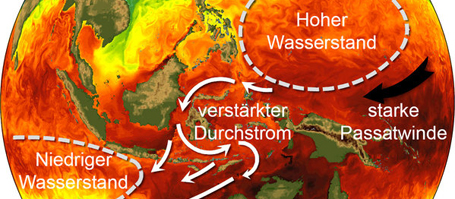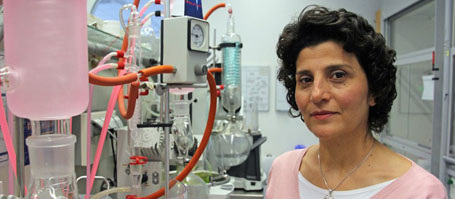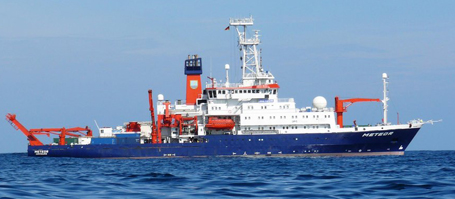This increase is very likely caused by a higher heat transfer from the Pacific to the Indian Ocean, as the authors report in the international scientific journal Nature Geoscience.
Although the emissions of greenhouse gases continued to rise steadily, global warming seems to pause unexpectedly at the end of the 20th and the beginning of the 21st century. An international team of scientists investigated reasons for this surprising development. In a recent study that used observational data as well as model results they were able to show that the Indian Ocean has stored much more heat in the past two decades than in previous times. A large fraction of the heat has been transferred from the Tropical Pacific via the Indo-Pacific Archipelago into this part of the world ocean.
“Initially our hypothesis was that above average heat was stored in the Pacific”, Dr. Wonsun Park, co-author from GEOMAR Helmholtz Centre for Ocean Research Kiel reports. “We had to reject this hypothesis because observed hydrographic data showed a decline of the heat content in the Pacific”, Park continued. Thus, lead author Dr. Sang-Ki Lee from University of Miami and NOAA AOML conducted a series of comprehensive model studies. With these results Sang-Ki Lee and Wonsun Park were able to come up with a conclusive mechanism to explain the pause of global warming.
In the Indo-Pacific region the past two decades were characterized by enhanced “La Niña-like” conditions with cold waters in the Eastern Pacific and warm waters in the Western Pacific. Driven by the enhanced trade wind system, warm water was moved westward by the Indonesian throughflow into the Indian Ocean. Finally, about 70% of the global heat uptake is stored in the upper 700 metres of the Indian Ocean.
“The results of this study underpin the importance of the Indonesian throughflow as an important part of the global (thermohaline) circulation”, Sang-Ki Lee states. The accumulated heat could be redistributed globally by other ocean currents such as the Agulhas current and finally may reach the Atlantic. “At present stage, we do not know which climate variations might be affected due to this redistribution of heat”, Dr. Park summarizes. “We will continue to observe this phenomenon and also conduct further model studies”, the scientist from South Korea states.
Original publication:
Lee, S.-K., W. Park, M. O. Baringer, A. L. Gordon, B. Huber and Y. Liu, 2015: Pacific origin of the abrupt increase in Indian Ocean heat content during the warming hiatus. Nature Geoscience, doi:10.1038/ngeo2438.
Links:
www.geomar.de GEOMAR Helmholtz Centre for Ocean Research Kiel
www.aoml.noaa.gov Atlantic Oceanographic and Meteorological Laboratory, NOAA, Miami, USA
http://cimas.rsmas.miami.edu Cooperative Institute for Marine and Atmospheric Studies, University of Miami, USA
www.ldeo.columbia.edu Lamont-Doherty Earth Observatory, Earth Institute at Columbia University, Palisades, USA
Contact:
Dr. Andreas Villwock (GEOMAR, Communication & Media), Phone: +49-431 600-2802, presse(at)geomar.de
…



